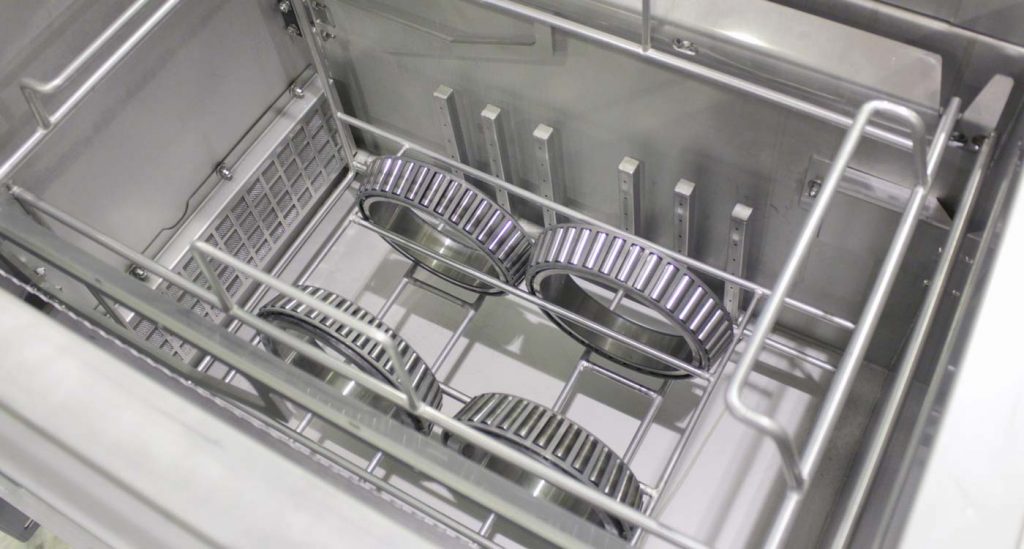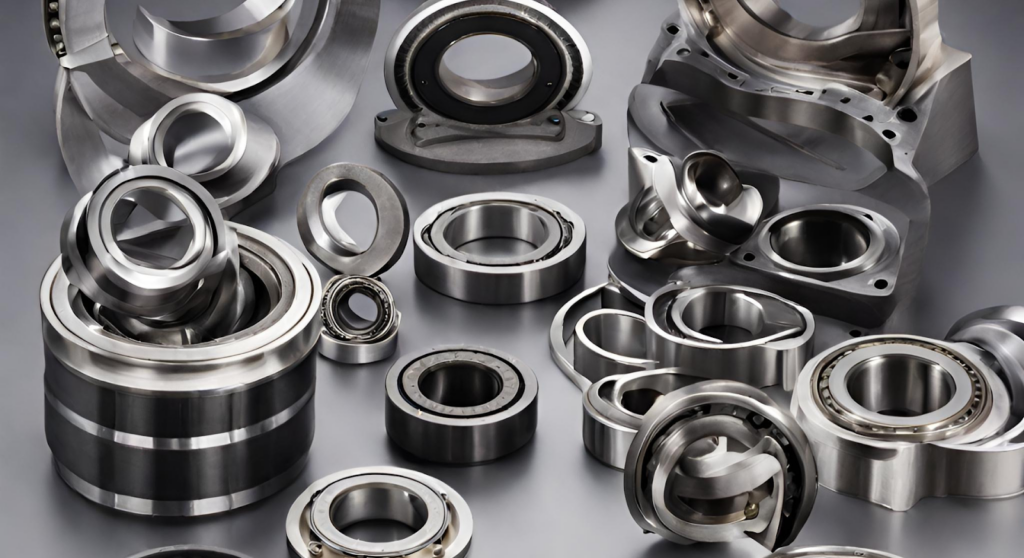Are your bearings failing prematurely? You’re likely making mistakes. These mistakes lead to downtime and higher costs.
Identifying and fixing these mistakes extends bearing life. Learn to avoid these common pitfalls. Keep your machinery running smoothly.
Let’s explore the top five mistakes I’ve seen in my years in the mold industry. Avoid these, and you’ll extend the life of your bearings.
Mistake 1: Using the Wrong Lubricant[^1]?
Using the wrong lubricant is a common mistake. Is your lubricant suitable for the job? This is more common than you might think.
Different bearings and conditions need different lubricants. Using the wrong one can lead to early failure. Ensure you’re using the right type and viscosity.

Using the wrong lubricant is like putting the wrong fuel in your car—it might run, but not well, and definitely not for long.
I’ve seen many instances where companies used a general-purpose grease for high-speed bearings, which leads to overheating and breakdown of the lubricant.
The lubricant should match the bearing type, speed, temperature, and load. High-speed applications need low-viscosity oils to reduce friction, while heavy-duty applications need high-viscosity lubricants to support the load.
Jacky in Canada should consider this with the weather conditions in mind. So if you’re unsure, consult your bearing manufacturer and a lubrication specialist to select the right lubricant for your specific needs.
It might seem like an extra step, but it will save you time and money in the long run by preventing premature bearing failure.
Mistake 2: Over-Lubricating or Under-Lubricating[^2]?
Too much or too little lubricant causes problems. Are you lubricating correctly? Getting the amount right is crucial.
Over-lubrication causes heat build-up and seal damage. Under-lubrication leads to friction and wear. Follow the manufacturer’s guidelines for lubrication.
Over- or under-lubricating bearings is a common pitfall that can significantly impact their lifespan and performance.
In my experience, the key is finding the right balance. Over-lubricating can lead to problems such as increased friction, heat build-up, and seal damage.
Excess grease, for example, can’t properly dissipate heat, causing the bearing to overheat and fail.
On the other hand, under-lubrication results in metal-to-metal contact, leading to increased wear and premature failure.
The solution? Follow the manufacturer’s recommendations for lubrication intervals and amounts.
Also, consider implementing a lubrication program that includes regular inspections and adjustments based on the operating conditions and demands of your equipment.
This will ensure optimal lubrication and prevent costly downtime.
Mistake 3: Not Cleaning Bearings Properly[^3] Before Installation?
Installing bearings without cleaning them is a big mistake. Do you clean new bearings? Dirt ruins bearings quickly.
New bearings often have protective coatings or debris. Clean them before installation. Use a proper solvent and ensure they are dry before lubricating.

Failing to clean bearings before installation is akin to setting them up for failure right from the start.
New bearings often come with protective coatings, preservatives, or even small debris from the manufacturing process.
These contaminants can act as abrasives, causing increased friction and wear within the bearing.
Before installing a new bearing, it’s essential to remove these contaminants using a proper solvent. Make sure to use a clean, lint-free cloth and allow the bearing to dry completely before applying lubricant.
I’ve seen situations where bearings were installed straight out of the box, only to fail within a few weeks due to internal contamination.
Also, Jacky in Canada, ensure you use a solvent that won’t damage any plastic components or seals in the bearing.
Mistake 4: Misalignment Issues[^4]?
Are your bearings aligned correctly? Misalignment is a silent killer. It causes uneven wear.
Misalignment causes uneven load distribution. This leads to premature wear and failure. Use precision tools to ensure proper alignment during installation.

Misalignment is a sneaky problem that can cause significant damage to bearings, often without any obvious initial signs.
When bearings are misaligned, the load is not evenly distributed across the rolling elements, leading to concentrated stress in certain areas.
This, in turn, results in premature wear, increased friction, and ultimately, bearing failure.
Proper alignment requires careful installation and the use of precision tools like laser alignment systems or dial indicators.
It’s also important to check for any structural issues that may cause misalignment over time, such as a bent shaft or a warped housing.
Regular inspections and proactive maintenance are essential for identifying and addressing these issues before they lead to costly downtime and repairs.
Mistake 5: Ignoring Environmental Factors[^5]?
Forgetting about the environment affects bearing life. Is your bearing protected? Harsh conditions speed up wear.
Environmental factors like moisture, dust, and chemicals harm bearings. Use proper seals and lubricants. Regularly inspect and maintain bearings in harsh conditions.
Ignoring environmental factors can dramatically shorten bearing life. Moisture can cause corrosion, dust can act as an abrasive, and chemicals can degrade lubricants and seals.
To mitigate these effects, select bearings with appropriate seals and shields to protect against contaminants. Also, use lubricants that are resistant to the specific environmental conditions.
Jacky should know that regular inspections are crucial for identifying any signs of contamination or damage.
Think about implementing a preventative maintenance program. When I was working at the mold factory, we used special coatings on bearings in corrosive environments to extend their lifespan.
Avoiding these five mistakes significantly extends bearing life. Proper lubrication, cleaning, alignment, and environmental protection are crucial.
[^1]: Understanding the impact of lubricant choice can prevent premature bearing failure and save costs.
[^2]: Learn how to maintain the right lubricant balance to enhance bearing lifespan and efficiency.
[^3]: Discover the significance of cleaning to avoid contamination and ensure optimal bearing performance.
[^4]: Explore how misalignment can lead to costly repairs and how to prevent it.
[^5]: Understanding environmental impacts can help in selecting the right bearings and maintenance strategies.

